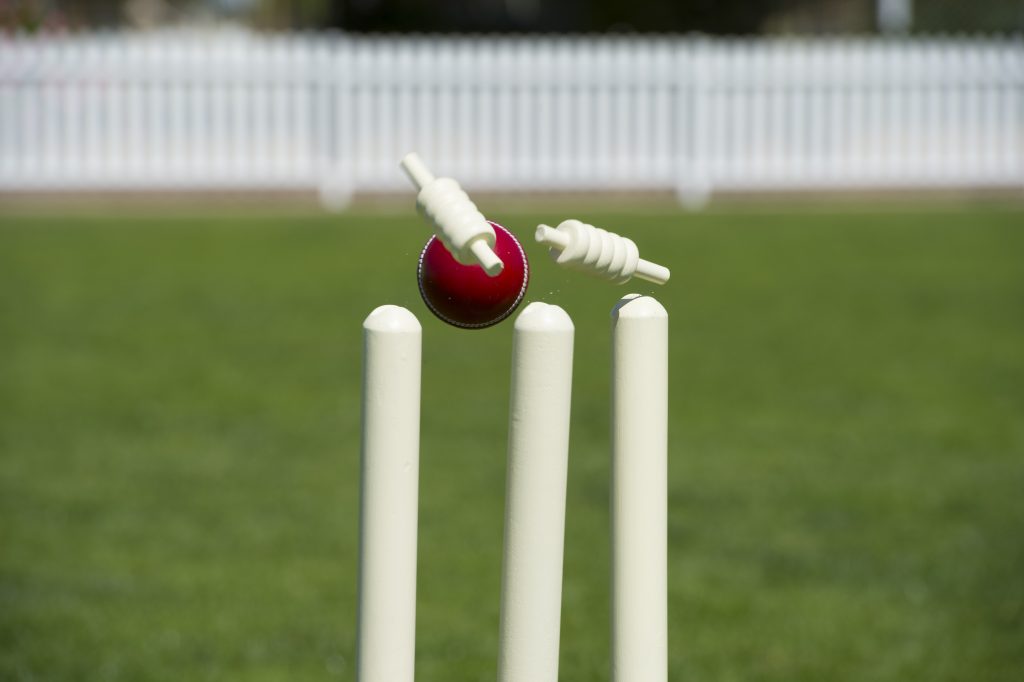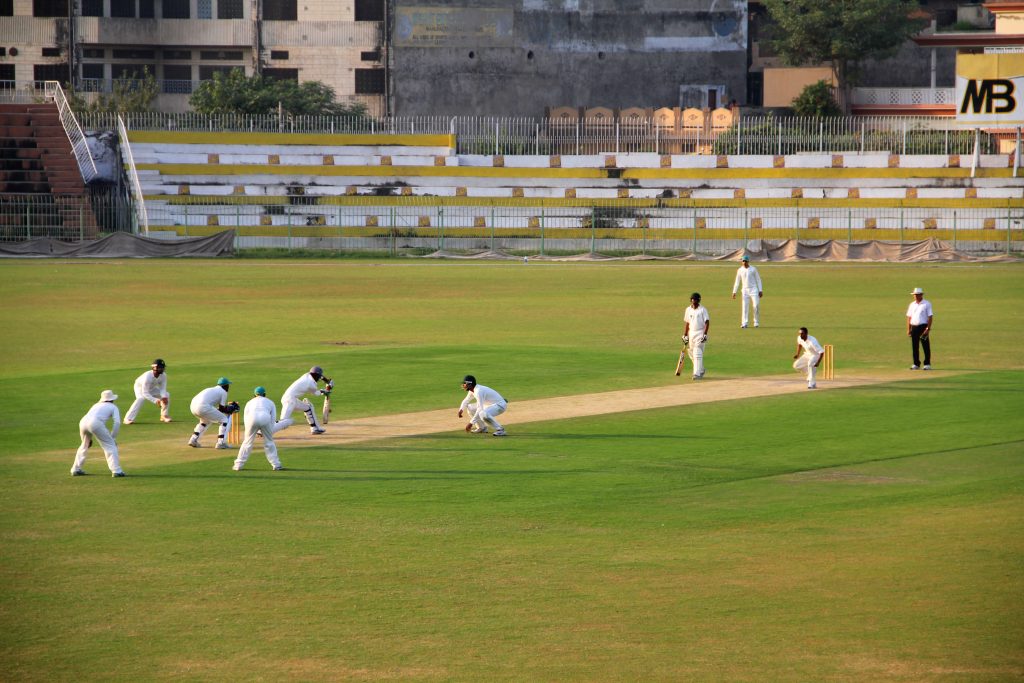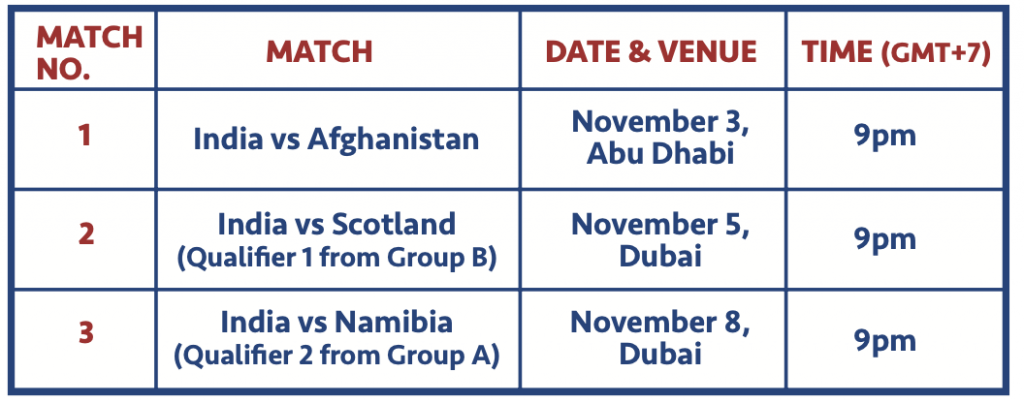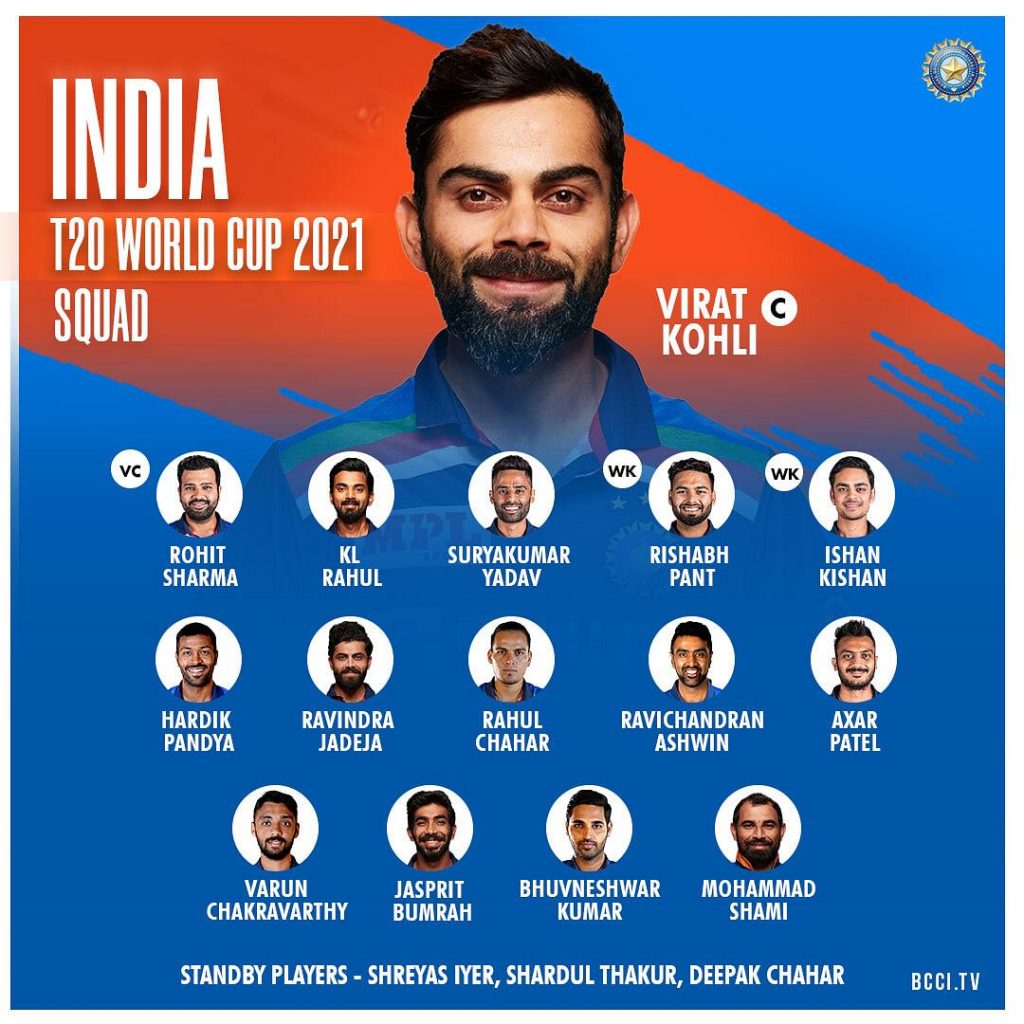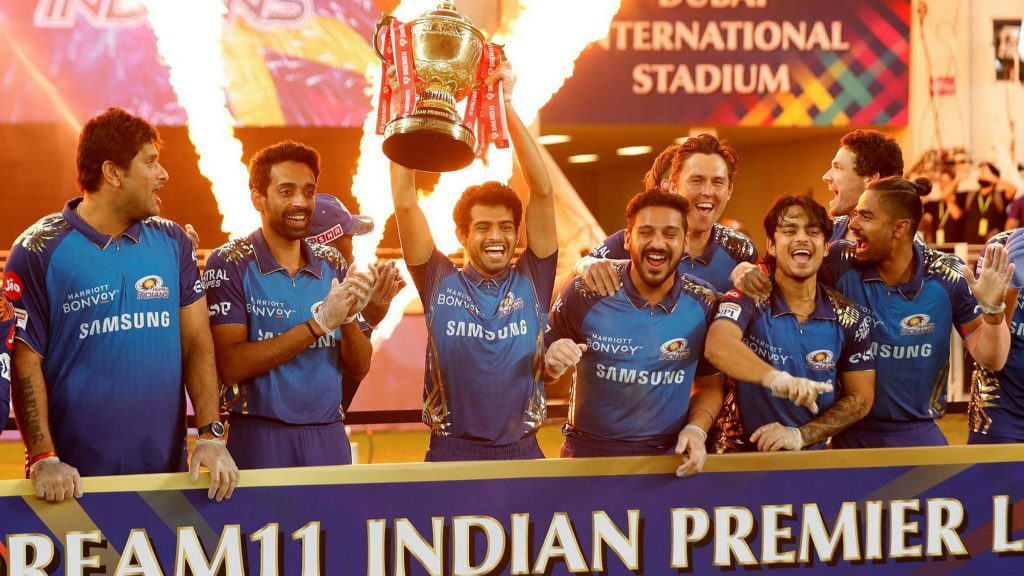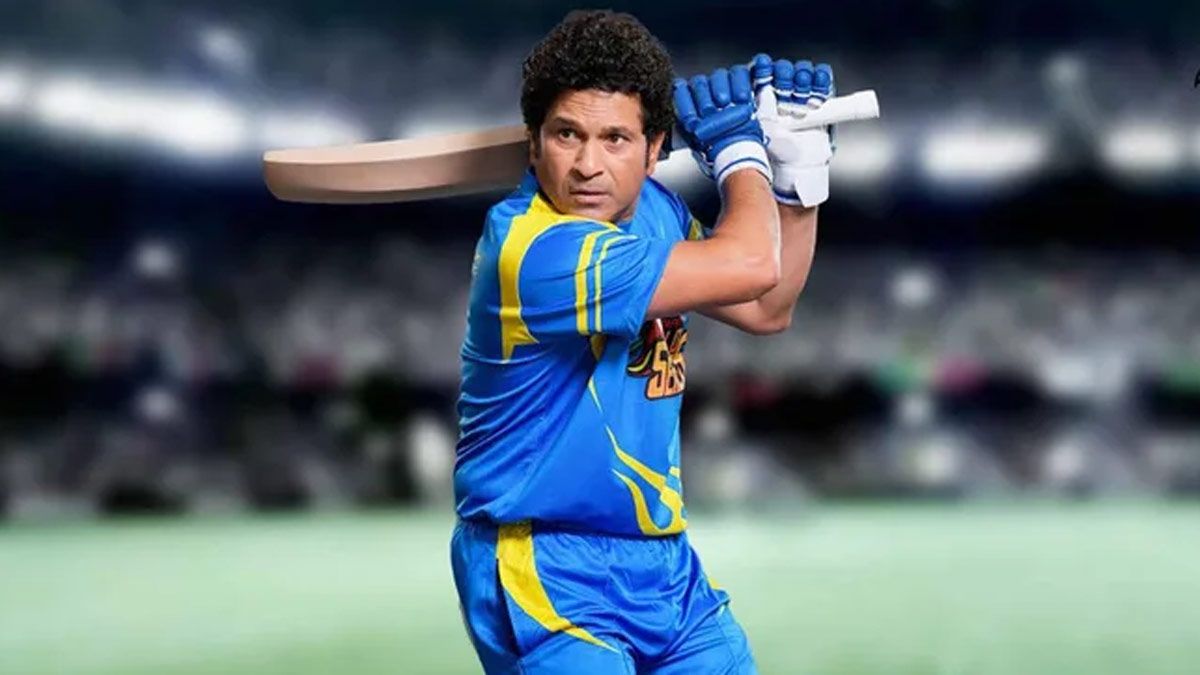Plus, a guide to the cricket basics. Don’t be a sitting (or golden) duck!
By Aiden Jewelle Gonzales
The ICC Men’s T20 World Cup is well underway, this time featuring India’s historic and first ever loss against Pakistan in a World Cup cricket match; a tragedy felt keenly by fans of the Men in Blue everywhere. But for those of you who haven’t tuned out in despair, or those of us who’re tired of fielding cricket questions we don’t know how to answer, we’ve put together a guide to understanding the ins and outs (and overs) of this international tournament.
Common terms to know:
- Innings: The length of time a team is at bat, which depends on the type of match.
- Over: Six balls bowled by a bowler. The bowler is replaced after an over, and may not bowl two consecutive overs.
- Crease: The safe zone around each wicket
- Dismissal: When a batsman is made ‘out’ by the other team, most commonly through being:
- Bowled out: The batsman misses the ball and it hits the wickets
- Caught out: The bowling team catches the ball before it hits the ground
- Leg before wicket (LBW): The ball hits any part of the batsman instead of hitting the wicket
- Run out: The bowling team caught the ball and threw it at the wicket before the batsmen reach the safe zone
- Stumped: The bowler moves out of the safe zone to hit the ball, and the wicket-keeper breaks the wicket
- 4: When the ball hits the oval’s boundary on the ground, worth four runs
- 6: When the ball goes over the boundary in the air, worth six runs
- Leg side: The half of the field next to the batsman’s non-dominant hand, from their perspective
- Off side: The other half of the field from the leg side
- Duck: A batsman’s dismissal with zero runs
- Golden Duck: When a batsman is dismissed at the first ball
- Maiden: An over by a bowler with zero runs by the batsmen
- No Ball: An illegal delivery by the bowler, which adds one bowl to their over, and one run to the opposite team
- Century: 100 or more runs by a batsman in a single inning
- ICC: The International Cricket Council, the world governing body of cricket
Types of Cricket Matches:
- Test Match: Can last up to five days and features 90 overs and two innings per team
- One Day Match: Lasts only a day, with 50 overs and one innings per team
- Twenty20: Can end within three hours, with only 20 overs per team. The newest and shortest form of cricket
Specific Twenty20 Cricket Rules:
- Each team plays one innings, of around 90 minutes each, with a 10-minute break between each innings
- Each inning is a maximum of 20 overs, and each bowler can only bowl a fifth of the total number of overs, so only up to four overs
- If a bowler delivers a no ball, the next bowl is a ‘free hit’ for the batter, who can only be dismissed through a very limited number of ways
- No more than five fielders on the leg side at any time
- During the first six overs, a maximum of two fielders can be outside the 30-yard circle; afterwards, a maximum of five fielders
- The bowling team needs to bowl their 20th over within 75 minutes or else the batting team gets an extra six runs for every over bowled after 75 minutes
INDIA’S UPCOMING FIXTURE LIST FOR THE 2021 T20 WORLD CUP:
Current top ranking Indian cricketers:
- Virat Kohli: Captain of the Indian Cricket Team (although he’s stepping down next month). Considered one of the best batsmen of his generation. Named Player of the Tournament in the last two T20 World Cups
- Rohit Sharma: India’s Limited-Overs Vice Captain and another world-class batsman. Has scored four centuries
- KL Rahul: Has scored a century in all three formats of international cricket, and considered one of the world’s best wicket-keeper batsmen
- Ravichandran Ashwin: The fastest Indian bowler to reach multiple wicket marks, and the third Indian to win the ICC Cricketer of the Year award
- Jasprit Bumrah: Another cricketer currently in the ICC’s top 10 rankings of bowlers for both Test cricket and ODIs. Has an unusual bowling style which has launched his popularity
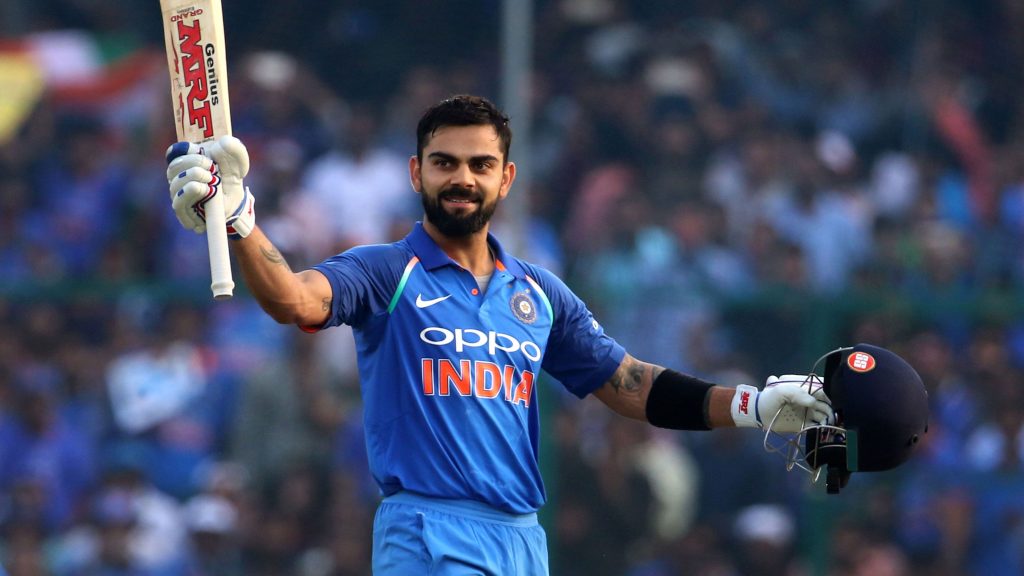
T20 World Cup Trivia
- India has won one T20 World Cup, in 2007
- The 2012 World Cup, held in Sri Lanka, was the first international Twenty20 tournament held in an Asian country
- The 2021 T20 World Cup was supposed to be hosted by India, but was changed to the UAE and Oman because of the COVID-19 pandemic
- India’s highest score in a T20 World Cup match was 218/4, against England in the 2007 T20 World Cup
- Former Indian cricketer Yuvraj Singh set a number of T20 records, including the first player to hit six 6s in an over and the fastest fifty (in 12 balls)
- Virat Kohli’s first and last T20 World Cup match as a skipper (captain)
Still confused? Here’s a comprehensive guide to all the basics you need to know:
Basic Rules:
- Two teams of 11 players each, officiated by two umpires, and each team takes turns batting and bowling
- Played on an oval on a field, delineated by a rope boundary, with a 66-foot long, rectangular pitch in the middle. A wicket (comprised of three wooden sticks, called stumps, that are driven into the ground, and two horizontal bails on top that connect the stumps) is placed on either end of the pitch. Safe zones (or creases) are drawn around each wicket
- The length of each game depends on the type of match, but is typically broken up into two or four innings
- The aim: To score more runs than the other team. A run is when a pair of players on opposite ends of the pitch (the batsmen) successfully run past each other from one safe zone to the other, without being made ‘out’ (a dismissal) by the opposing team. A run can only be made when a ball is ‘in play’ – after a batsman successfully hits a ball that’s been thrown (bowled) to them, and before the ball has been caught by the opposite team and thrown at the wickets. Multiple or no runs can be made during each play
- The batting team:
- Sends out two batsmen at a time (a partnership), one in front of each wicket: a striker (the one who bats the ball) and a non-striker
- The striker can hit the ball in any direction. A hit that reaches the oval’s boundary on the ground (a four) is worth four runs, one over the boundary in the air (a six) is worth six runs
- The striker is immediately replaced when they are dismissed by the other team, and replacements continue until the inning ends
- The bowling team:
- Spreads out around the oval while the other team bats, and sends out one bowler at a time
- Unlike baseball, the ball can bounce twice before reaching a batsman
- When the striker hits the ball, the bowling team must catch it and throw it at the wicket to dislodge one or both bails (breaking the wicket). This ends each ‘play’
- The team has a limited number of bowls per inning, depending on the match, and an inning ends when they finish their given number of bowls, or dismiss 10 of the batting team’s players.
International Competitions to Follow:
During cricket season, national cricket teams will embark on tours to other nations for weeks or months to play a series of Test Matches against the host nation. Ones of note include:
- India vs Pakistan’s annual Test Series, One Day Internationals (ODIs) and Twenty20 International Series
- The Ashes: An annual test series between England and Australia
Indian Premier League (IPL): A professional Twenty20 cricket league, and the most attended one in the world. Eight teams compete, with player acquisitions and trades from different countries’ national teams.
Cricket World Cup: The flagship ODI international championship between 10 teams. Held every four years, 32 teams play in the qualification rounds. India has won two.
ICC Men’s T20 World Cup: The international championships of Twenty20 international cricket between 16 teams. India has won six. The 2021 T20 World Cup is currently ongoing, with the finals to be held on November 14.
ICC Men’s Champions Trophy: Known as the ‘Mini World Cup’ and is an ODI championship, formerly between 13 teams and now between eight. India has won eight.
Some Indian cricket legends:
- Sachin Tendulkar: The only player in history to have scored 100 international centuries, and the only one to have completed more than 30,000 runs in international cricket
- Kapil Dev: Known as the Haryana Hurricane for his fast bowls, he was also an all-rounder, and holds the world record for the most number of wickets taken in Test cricket
- Sunil Gavaskar: Considered one of the best opening batsmen in history, has set world records for the most Test runs and Test centuries by a batsman



